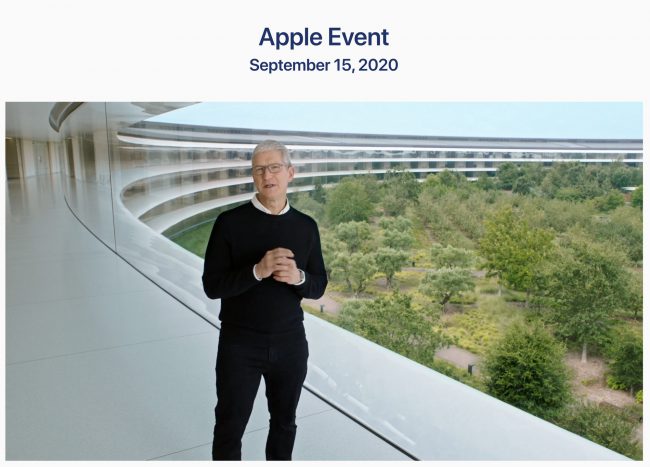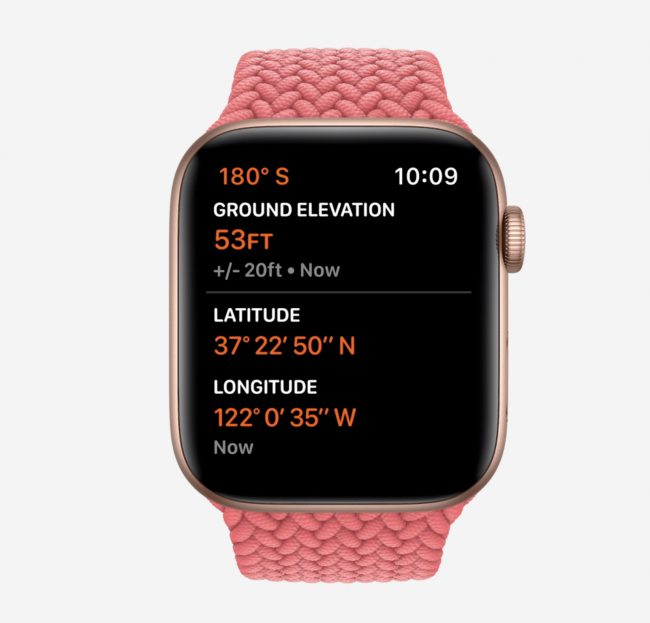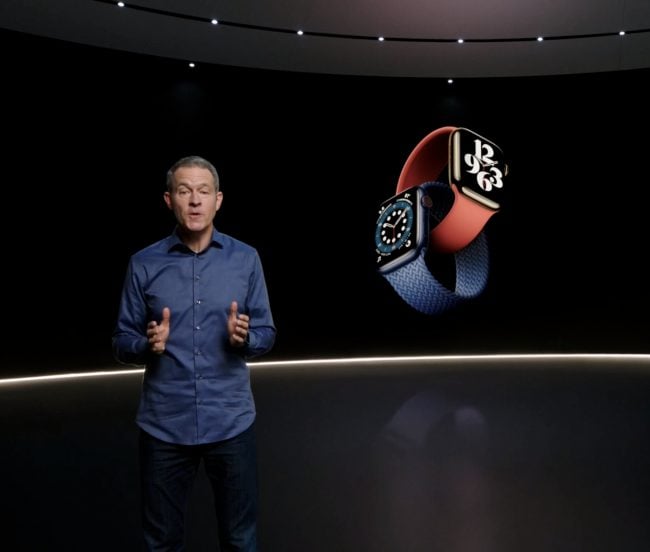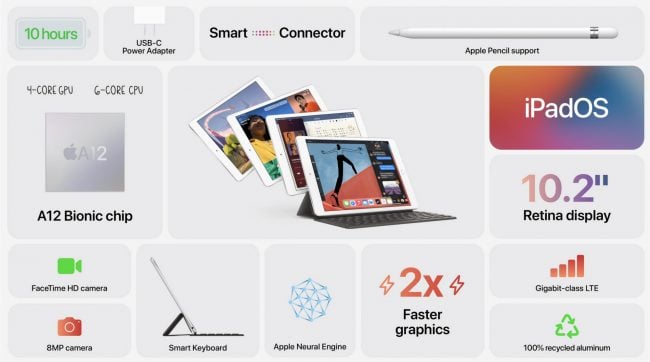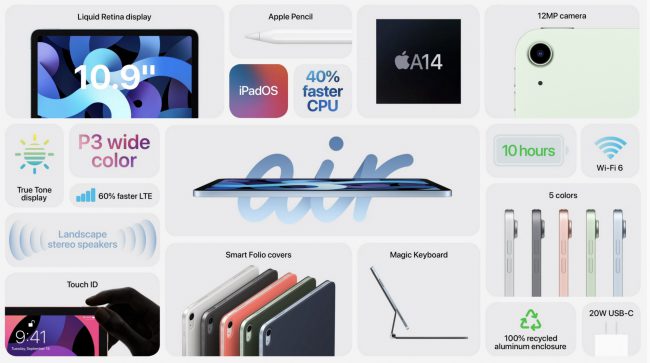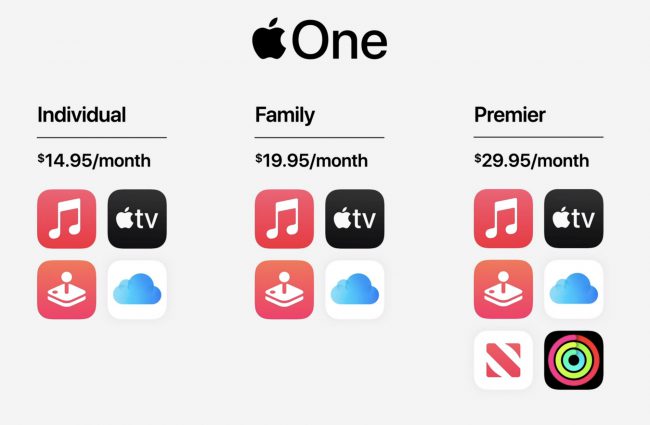2020 has taken away a lot, but perhaps it has given us even more. And with brands like Apple, who tend to do the absolute most when it comes to their keynotes, yesterday was a welcome surprise. As the resident Apple Fanboy for GearDiary, it’s only right that I give my take on things.
So to start of the keynote, our favorite person Tim Cook came on and set the stage and proved Jon Prosser to be a trustworthy source for leaks by immediately letting us know not to expect anything about the iPhone. He probably turned off many people with this, but it was to be expected Apple would do this after weeks of speculation about the production of iPhones JUST beginning. Knowing this, the first five minutes of the conference saved us all a bunch of time between random overused terms like “utterly fantastic,” “Remarkable,” and “trendsetting” you’d typically hear for 4-5 minutes. In the same spirit, I wanted to quickly highlight the essential things and a few that Apple didn’t highlight. Let’s start with the Apple Watch.
Apple Watch
Apple decided to start the keynote by introducing the Apple Watch Series 6. If you have the series 5, you’ll probably end up skipping this altogether because the only real additions are the new Blood Oxygen feature and the ability to monitor your elevation continuously. While this probably would’ve been nice to have all spring and summer for hiking, and certainly could’ve been in Apple Series 5, we know Apple has to save something for the next series. The former is the main highlight of series 6, with Apple explaining it as:
Apple Watch Series 6 expands the health capabilities of previous Apple Watch models with a new feature that conveniently measures the oxygen saturation of the user’s blood, so they can better understand their overall fitness and wellness. Oxygen saturation, or SpO2, represents the percentage of oxygen being carried by red blood cells from the lungs to the rest of the body, and indicates how well this oxygenated blood is being delivered throughout the body.
To compensate for natural variations in the skin and improve accuracy, the Blood Oxygen sensor employs four clusters of green, red, and infrared LEDs, along with the four photodiodes on the back crystal of Apple Watch, to measure light reflected back from blood. Apple Watch then uses an advanced custom algorithm built into the Blood Oxygen app, which is designed to measure blood oxygen between 70 percent and 100 percent. On-demand measurements can be taken while the user is still, and periodic background measurements occur when they are inactive, including during sleep. All data will be visible in the Health app, and the user will be able to track trends over time to see how their blood oxygen level changes.
Aside from that, the Series 6 Apple Watch will include an “enhanced” Always-On Retina display that Apple states is up to 2.5 times brighter than the Series 5, making it easier to see the watch in bright sunlight. I mentioned earlier about the always-on elevation feature, which Apple calls the Always-On Altimeter. It will not only be power-efficient but will allow for small elevation changes above ground level, which is great for not just hiking, but biking, walking, you name it.
The Series 6 comes with a new variety of colors, including Product Red, a striking blue, and even a new graphite color that I’m partial to. They will look great with Apple’s New Braided Solo Loop, or the “normal” solo loop, which essentially is the Apple silicone band you’re used to from Apple, without the additional tabs. It’s a more custom fit watch band with an overly complicated method or trying the band on.
In practice, you have to print out a document that you end up cutting and putting on your wrist to measure the perfect size. I feel like this was one of those missed opportunities for Apple to showcase all of those AR functions that most of us are wowed by, but never actually use that they spend 25 minutes raving about updating ever year. Just a thought.
Aside from Series 6, there’s the Apple Watch SE, which for all intents and purposes, is the replacement for the Apple Watch 4, and ultimately the Apple Watch 5. It has the same modern design, with the fall detection, Emergency SOS, Noise app, and always-in altimeter, but to justify the price, Apple took away the ECG (we can’t all have it all). It will feature all the fitness features, the health functionalities you’d expect from Apple. Essentially the Apple Watch SE is the “entry-level” Apple Watch, and at $279, its a great Christmas gift for a teen or spouse who doesn’t overthink how they’d use the Apple Watch.
Sidenote: One HUGE takeaway for me that I wish Apple would’ve spent more time on is the family aspect of Apple Watch. Without saying too much, they mentioned the ability of family sharing Apple Watch so you can track your children, ping them if need be, and all without the need of the rumored “Airtag.” This was huge for me.
Apple moved on from the Apple Watch to discuss their iPads, which was not a surprise to anyone.
8th Generation iPad
Apple seems to have taken notice of Chromebooks cornering the distance learning market and opted to update their Touch-ID enabled iPad finally. At $329, the new iPad features an A12 Bionic processor that, according to Apple, is six times faster than the best selling Android tablet and Chromebooks. This is interesting because I feel like this is an announcement they could’ve done over the summer; with the number of students returning to school, this would’ve been better represented being a must-have back to school item by the company. Time will tell if this will be a success, but luckily the 8th-gen iPad has a $299 price tag for education purposes and has Apple Pencil and Smart Keyboard compatibility.
iPad Air
Okay, I have to admit, as an iPad Pro user, the iPad Air was something I had my eyes on immediately. Featuring a 10.9-inch “Liquid Retina display” True Tone Technology, P3 wide color, and an antireflective coating. The biggest takeaway here, though, is instead of offering FaceId, the iPad Air includes Touch ID directly from the Power Button, which in my honest opinion, should have always been a thing and will more than likely happen with the iPhone 12 (hopefully). With a resolution of 2360 x 1640 complete with full lamination, it has me looking at my 2018 iPad Pro skeptically. What’s more, it works with the Magic Keyboard and the second-gen Apple Pencil, and it costs $599 to start.
Aside from the hardware, Apple shined by announcing two more announcements: Apple Fitness+ and the Apple One Bundle.
Both arriving later this year, Fitness+ by Apple incorporates metrics from the Apple Watch for users to visualize directly to their iPhone, iPad, or Apple TV. Pretty much a head-on competitor for many fitness apps, I felt this to be a direct shot at Peloton, who recently released their new Bike+ that comes complete with Apple Watch functionality. Aside from the ability to properly track biking, Fitness+ does a bit more, regardless if you are a beginner or a gym guru. Complete with World-Class trainers, Fitness+ intelligently suggest new options to match your workouts to keep your routines fresh. And if you’re an Apple Music subscriber, you can fine-tune your workout type, trainer, duration, with your favorite music to save and listen to later. According to Apple:
When a workout is selected and started on iPhone, iPad, or Apple TV, the correct workout type will automatically start on Apple Watch. During the session, the metrics from Apple Watch are shown on the screen and come to life for moments of inspiration. For example, when the trainer says to check heart rate or begins a countdown timer, those numbers will animate on the screen. And for customers who like to push themselves with a little healthy competition, the optional Burn Bar shows how their current effort stacks up against anyone who has done the same workout previously.
The familiar Activity rings from Apple Watch also appear onscreen, highlighting the wearer’s progress and launching an animated celebration as they close. With Activity Sharing, users can enable friends and family to see Fitness+ workouts completed, and workouts can also be shared to their favourite social media channels.
At the launch, Apple Fitness+ will be available in Australia, Canada, Ireland, New Zealand, the UK, and the US for $14.99 a month or $119.99 a year. If you purchase an Apple Watch Series 3 or later on or after 9-16-20, you’ll receive a three-month trial, but everyone else gets a month trial. Alternatively, you can purchase Apple One, which is my favorite part of this keynote.
I told my Twitter followers and our GearDiary group chat that all I wanted from Apple was a bundle of their services, and that’s precisely what they are starting to offer in Apple One.
Starting at $15 a month, Apple One offers three plans: Individual, Family, and Premier. As you can tell from the photo, the Individual is great itself as you get Apple Music, Apple TV+, Apple Arcade, and iCloud storage (50GB). The Family plan version offers the same, but you’ll get 200GB of storage, which is more than enough for some. However, if you’re like me, you’ll want the Premier plan, and there are plenty of reasons why.
At $29.95, not only do you get all four of the items that the individual and Family plans get, but you also get 2TB of storage versus 200GB from the Family plan, Apple News+, and the new Fitness+ (this is the only plan that includes Fitness+, by the way). Alone, the Apple Music Family subscription is $14.99, and iCloud storage is $9.99. So being able to have everything at your disposal for a bundled price ends up saving you money in the long run. According to Apple, the Premiere plan will save you roughly $25 for all six services instead of buying them separately. I just canceled Dropbox because I now have 2TB from Apple for less money than Dropbox’s $20 a month tier, with more benefits, including workouts, news, and even a streaming service.
Overall I think Apple is still heading in the right direction, and the Apple One bundle is the most significant step they’ve taken in a long time. I’m hoping that their competition and other services will begin bundling their products to make them look more appealing to consumers, but only time will tell (Looking at you, DirecTV Now).
You can watch a recap of the Apple event here.
How did you feel about Apple’s keynote? Do you intend to purchase an Apple Watch or iPad on release day (September 16th)? Will you be buying in on Apple One or Apple Fitness+? Let us know in the comments!

